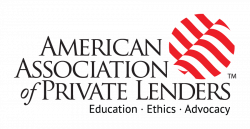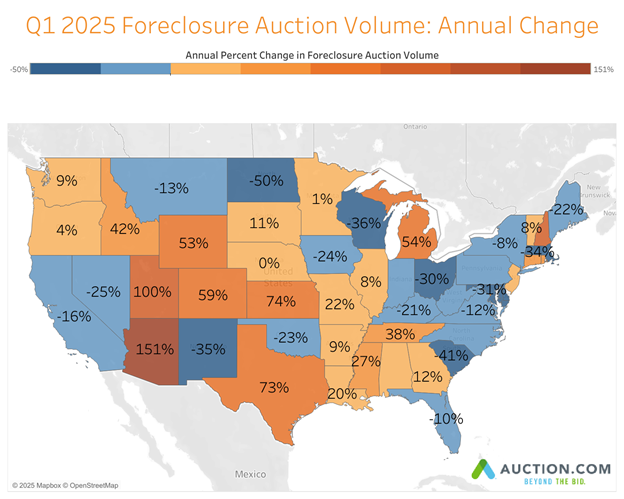Rising delinquencies, stricter lending conditions, and declining property valuations are reshaping the commercial real estate landscape.
The commercial real estate (CRE) lending market, including both traditional and private lending sectors, is facing significant challenges in 2025. Delinquency rates have surged, rising from 0.77% to 1.18% year over year, marking a 53% increase. This translates into an additional $12.3 billion in delinquent loans across 2024 and 2025, out of an estimated $3 trillion in outstanding CRE loan balances. A critical factor exacerbating this trend is that approximately one-third of these loans are set to mature between 2024 and 2025, contributing to heightened credit tightening by banks and institutional lenders.
In the private lending sector, CRE lending remains broadly defined, encompassing various property types and loan purposes. Properties range from multifamily units (five or more units), small commercial assets, and mixed-use developments to specialty-use real estate.
Likewise, loan purposes vary, including ground-up construction, debt-service coverage ratio (DSCR) loans, and cash-out refinancing for reinvestment into unrelated ventures. A survey of nonbank bridge lenders projects more than $250 billion in loan originations in 2025, reflecting a 22% year-over-year increase. However, the reliability of this survey is uncertain due to the potential for double counting, as many borrowers shop multiple lenders for financing.
Adding to market strain, recent wildfire losses in the Greater Los Angeles area have impacted an estimated 430 commercial and multifamily properties, totaling $1.8 billion in damages. This has further stressed an already volatile lending environment.
Creative Financing Strategies
With credit markets tightening, borrowers in 2025 are encountering greater difficulty securing capital at competitive rates. Traditional financing sources, with limited exceptions, demand higher yields, while banks remain cautious in extending CRE loans. Consequently, private lenders have stepped in to fill the financing gap, albeit with stricter lending requirements. Borrowers must now demonstrate increased liquidity and provide additional collateral, often in the form of cross-collateralized properties.
The underwriting process has become increasingly rigorous, requiring in-depth feasibility studies and extended due diligence periods. Some borrowers have turned to alternative financing structures, including family office capital and hybrid debt-equity arrangements, particularly for larger projects. These alternative solutions, while effective for some, introduce additional complexities in structuring deals and assessing long-term viability.
Risk and Fraud in CRE Lending
As project timelines extend beyond initial expectations and the number of delinquent loans rises, a new trend has emerged: Borrowers struggling to refinance are resorting to restructuring transactions through newly created entities and non-arm’s-length sales to secure fresh financing. In some instances, private lenders knowingly engage in these practices to mask potential balance sheet delinquencies.
The proliferation of fraudulent schemes—including the creation of “straw man” LLCs—has made it increasingly difficult for institutional capital to trust private lenders. This lack of transparency is causing major institutions to divest from the sector. In fourth quarter 2024 alone, financial institutions off-loaded approximately $500 million in CRE loan portfolios, highlighting their retreat from an increasingly opaque lending environment.
Property Types at Risk
The commercial real estate landscape is experiencing notable shifts in demand, requiring private lenders to exercise heightened scrutiny. Previously high-growth sectors, such as warehouse and distribution center conversions (which surged from 2020 to 2023 due to e-commerce expansion), are now in decline.
A significant indicator of this trend is Amazon’s decision to cancel plans for 42 warehouse facilities totaling 25 million square feet and to delay the opening of 21 additional locations. Furthermore, the company has subleased at least 10 million square feet of existing warehouse space to manage operational costs.
Given these developments, private lenders must reassess the long-term viability of loans tied to warehouse and distribution properties, ensuring borrowers maintain sufficient cash flow to service their debt obligations.
Shifts in consumer behavior, supply chain disruptions, and evolving market conditions have led to decreased demand for warehouse space. The overbuilding of logistics centers during the e-commerce boom of 2020-2023 has now resulted in an oversupply, forcing landlords to offer aggressive lease incentives to attract tenants.
Declining Office Space Valuations
By early 2024, the U.S. office market reached an all-time high of one billion square feet of vacant space. Vacancy rates surpassed 15% in several major metropolitan areas, with Class B and C office buildings facing the most significant downturn. In contrast, Class A office spaces continued to attract relatively stronger demand. The sustained oversupply led to downward pressure on rental prices and resulted in financial distress for both landlords and lenders. Consequently, office property valuations are projected to decline by at least 25% in 2025, directly linked to occupancy rates and DSCR ratios.
The rise of hybrid work models has further diminished demand for office spaces, particularly in central business districts. Many companies are opting for flexible lease agreements or downsizing their footprints, exacerbating the financial strain on landlords. Additionally, efforts to convert vacant office buildings into residential or mixed-use developments are facing regulatory and zoning challenges, slowing the pace of adaptation in major cities.
Evolving Fraud Tactics in CRE Lending
Advancements in artificial intelligence (AI) have facilitated increasingly sophisticated fraudulent practices in CRE lending. AI-generated documentation, including falsified bank statements, lease agreements, and purchase records, is being leveraged to fabricate a convincing paper trail for distressed loans. This has led to a rise in multilayered fraudulent transactions, wherein borrowers inflate occupancy rates and property values to secure refinancing. Straw man leases and artificially inflated rental agreements have become more prevalent, further complicating risk assessment for lenders.
Moreover, fraudulent actors utilize shell companies and layered entities to disguise true ownership and financial conditions. This practice makes it difficult for lenders to accurately assess risk and has led to increased scrutiny from regulatory bodies. In response, some financial institutions are implementing advanced AI-driven fraud detection tools to analyze transaction patterns and detect inconsistencies.
Regulatory and Market Responses
Regulators are increasingly focusing on transparency in commercial real estate transactions. Financial institutions are being urged to adopt stricter due diligence measures, and some lenders are enhancing their fraud detection frameworks to mitigate risks. The Securities and Exchange Commission (SEC) and the Financial Crimes Enforcement Network (FinCEN) are both ramping up oversight, requiring greater disclosure of ownership structures and funding sources.
Meanwhile, the Federal Reserve’s monetary policy decisions continue to influence lending conditions. Interest rates remain a key factor in CRE financing, with higher rates limiting refinancing options and exacerbating financial strain on borrowers with maturing loans. Given the likelihood of continued economic volatility, lenders must remain adaptable and proactive in their risk management strategies.
The Road Ahead
The commercial real estate lending market faces a confluence of challenges, including rising delinquencies, stricter lending conditions, and declining property valuations. Traditional lenders continue to retreat, allowing private lenders to bridge financing gaps, albeit with increased exposure. Borrowers are employing creative financing solutions, but fraudulent activities and opaque transactions are eroding transparency.
Moving forward, lenders must enhance due diligence efforts, strengthen risk assessment protocols, and adopt technological solutions to detect fraudulent documentation. The evolving landscape necessitates a cautious and strategic approach to mitigate potential losses. Additionally, regulatory oversight and market adaptability will play crucial roles in shaping the future of commercial real estate financing, ensuring a more stable and transparent lending environment.











Leave A Comment